Search Results
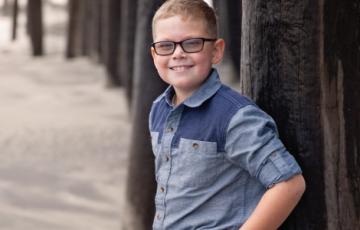
Austin
In May 2011, when Kimberly Schuetz was starting to plan her son Austin’s third birthday, he was diagnosed with a high-risk form of acute lymphoblastic leukemia.
Austin was immediately placed on a chemotherapy regimen. However, when a routine blood test revealed that he relapsed in October 2012, their only option was a bone marrow transplant to save his life. After that transplant, his cancer came back for the third time in May 2013.
Chronic Myeloid Leukemia
Chronic myeloid leukemia (CML)- Is a cancer of the bone marrow and blood
- CML is usually diagnosed in its chronic phase when treatment is very effective for most patients
- CML has three phases
Click here to access CML statistics.
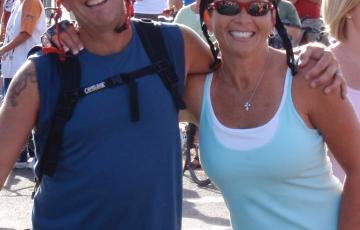
David
My beloved husband, David served the community of Arlington, Texas, through the fire department for 38 years. Throughout his career, he served the city and trained and mentored other up-and-coming firefighters. He retired in 2017, and just nine months later, he was diagnosed with acute myeloid leukemia (AML), a very aggressive blood cancer. His oncologists believe it had simmered in David's marrow for a couple of years before it went acute. It came on with similar symptoms to the common flu.
Benedict
I was diagnosed with stage 4 Hodgkin lymphoma (HL) in June 2023. This was after months of testing, worrying, praying, and worrying some more. Honestly, the testing period was so stressful that it was almost a relief to know exactly what was going on when I was diagnosed. This is because while I was testing, I was taking official visits to prospective universities every weekend. I am a football player, and at the time, I was trying to decide which scholarship offer I was going to accept ― which university I was going to pin my hopes and dreams on. It was a stressful time.
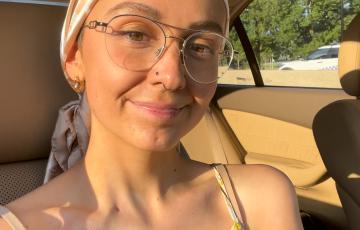
Emily
I was diagnosed with B-cell acute lymphoblastic leukemia (B-ALL) when I was 28 weeks pregnant. I came into the ER with a high fever from the flu, and one routine CBC test later, had me rushed for more tests and a bone marrow biopsy to confirm leukemia.
I was transferred from an already very large and experienced hospital to another due to being pregnant. Thankfully a doctor wanted to take my case . . . two hours away.

Erica
Erica was diagnosed with potentially fatal Stage 4 Hodgkin Lymphoma on March 28, 2013. Her journey to survive her battle with cancer was very trying but after overcoming her obstacles, Erica is very passionate about inspiring people to have the d’zire to survive any challenges that they may face in their lives. Erica’s fight to survive lymphoma had its highs and its lows, however, she didn’t give up even when at times her battle seemed like it wasn’t getting any easier.
Treatment
The main treatment for ALL is chemotherapy given in phases. Most treatment regimens take 2 to 3 years to complete.
Not every child with ALL receives the same treatment. Your child’s doctor will tailor your child’s treatment based on the ALL subtype and other factors, such as age, health and how the cancer responds to treatment.
Your child’s treatment may also include:
Follow-Up Care
Find more information about follow-up care, including what to expect, long-term and late effects of treatment, survivorship clinics, and other resources, such as The National Comprehensive Cancer Network (NCCN) treatment guidelines.
B-Cell Prolymphocytic Leukemia (B-PLL)
B-cell prolymphocytic leukemia (B-PLL) is a very rare and typically aggressive malignancy (cancer) characterized by the out of control growth of B-cells (B-lymphocytes). B-cells are a type of white blood cell that is part of the immune system. B-PLL usually affects older adults with a median age at diagnosis of 69 years, and it is slightly more common in men than women. Most of the time, B-PLL occurs as a transformation or evolution of a more slow-growing B-cell cancer, such as chronic lymphocytic leukemia. Rarely, this is a primary disorder.
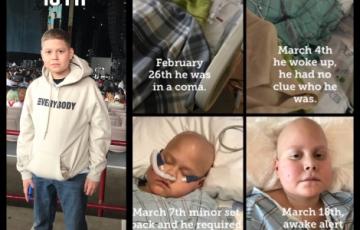
Nate
On Monday July 17, 2017 my world got flipped upside down. I got out of work to bring my son, Nate to the ER, he had a bad stomach ache, my thoughts were he might have appendicitis. When I got him to CCMC, he was in extreme pain and they took him in right away. Initially the docs thought the same, they did a bedside ultrasound to find the appendix and it could not be found. A few hours passed and I'm asked to step out the room. At that moment I knew that my life would never be the same... My son, my life, my everything was sick and this time a kiss and band aid wasn't going to fix it.

Donna
I was shockingly diagnosed with a monoclonal spike in November 2019 (six months after the unexpected death of my mom). Treatment was started in June 2020. I went to Mt. Sinai NYC where they have a team that just deals with multiple myeloma (MM). I am grateful that a couple of people recommended I go there. They treated me with four drugs, one of which wasn’t available at my local oncologist. The regimen was Velcade, Revlimid®, daratumumab, and dexamethasone. I had this induction therapy until my stem cell transplant in March 2021.
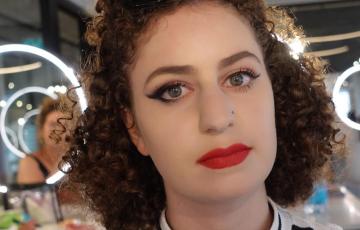
Gal
My name is Gal, and I am 21. In 2011, I moved to California from Israel. Within a few months, I was diagnosed with acute lymphoblastic leukemia (ALL). I was only eight. I was dismissed by doctors for four weeks because I was too young even though I showed clear signs of blood cancer. My bones hurt a lot. I started to get a lot of big bruises, and I had an insanely high fever. I was in treatment for two years and seven months. I survived in 2013 as I entered my teen years. When I was sick, I would go to a camp called Camp Simcha. It is a camp for cancer patients in upstate New York.
Coy
My son, Coy, was diagnosed with Hodgkin lymphoma (HL) on May 5, 2023. He was a junior at the United States Coast Guard Academy (USCGA) and had just won national runner-up in the NCAA Division III national wrestling tournament in March. He was a 4.0 student and had just been selected as Regimental Commander for the fall of his senior year. He returned home to secure and begin treatment. It was a challenge getting him into treatment, however, with great persistence, he was able to secure treatment with Dr. Allison Rosenthal at the Mayo Clinic in Phoenix, Arizona.
Childhood Non-Hodgkin Lymphoma
Because of new and better therapies, cancer survival rates for children have improved dramatically during the last several decades. Scientists continue to search for the causes of childhood lymphoma so they can develop better treatments with less toxic side effects.
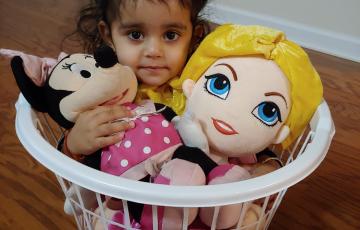
Myra
At age 2, Myra began having fevers and joint pain. Her parents took her to their pediatrician where she had bloodwork done. The results came back normal except it showed she was a little anemic.
“Myra never had any bruising or any issues other than the recurring fever,” according to her father.
Logan
July 3, 2021, was the day that my life changed forever. I had been dealing with odd symptoms for months, and after multiple visits with dismissive practitioners, I finally had the ear of a doctor who believed me. A tumor located in my mediastinum was discovered via a CT scan. This news was devastating. I was due to be married in one month and how could someone who is just beginning her life possibly have something like this happen?
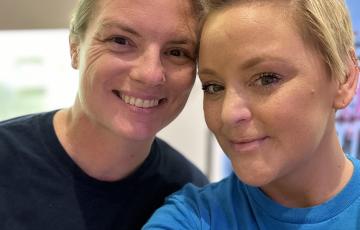
Stephanie and Amy
Stephanie: My journey with blood cancer began long before my diagnosis. In 2006, my world was shattered when my mom, just 52 years old, was diagnosed with acute myeloid leukemia (AML). She was quickly isolated in a specialized hospital, enduring grueling rounds of chemotherapy. I was about to start nursing school and desperately tried to educate myself on her illness, knowing deep down that the prognosis was grim. They mentioned a bone marrow transplant, but she never made it that far. A fungal pneumonia took her from us in December 2006.
Watch and Wait
Watch and wait (also called active surveillance) involves closely monitoring a patient's condition without giving any treatment until symptoms appear or change. Some people can manage their blood cancer — depending on the disease — with their doctors for years using a watch-and-wait approach. It is usually recommended for patients in early stages of indolent (slow-growing) or chronic forms of blood cancers.
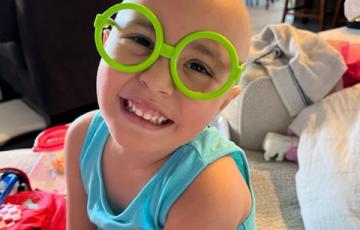
Juliana
Juliana is a vibrant, sweet, intelligent, and brave daughter to Judith and Jorge. She was born on May 24, 2017, in Houston, Texas. On December 30, 2021, Juliana was diagnosed with leukemia. On January 2, 2022, after three and a half days in the hospital and one full day in the ICU, her diagnosis was confirmed as B-cell acute lymphoblastic leukemia (ALL).
Follow-Up Care
Click here for information about follow-up care, including what to expect, long-term and late effects of treatment, survivorship clinics, and other resources such as The National Comprehensive Cancer Network (NCCN) treatment guidelines.
Use the Survivorship Workbook to collect all the important information you need throughout diagnosis, treatment, follow-up care and long-term management of a blood cancer.
Follow-Up Care
Click here for information about follow-up care, including what to expect, long-term and late effects of treatment, survivorship clinics, and other resources such as The National Comprehensive Cancer Network (NCCN) treatment guidelines.
Use the Survivorship Workbook to collect all the important information you need throughout diagnosis, treatment, follow-up care and long-term management of a blood cancer.
Treatment Outcomes
A few decades ago, there were very low cure rates in both children and adults diagnosed with ALL. Today, childhood ALL has one of the highest cure rates of all childhood cancers, approaching 92 percent for children younger than 15 years and more than 94 percent for children younger than 5 years.
Side Effects
Cancer therapy for juvenile myelomonocytic leukemia (JMML) can sometimes produce side effects. For most patients, treatment side effects are temporary and go away once therapy ends. For others, side effects can be more severe, sometimes requiring hospitalization. Some patients never have side effects.
Before your child undergoes treatment, talk with his or her doctor about potential side effects. Drugs and other therapies can prevent or manage many side effects.
Stem Cell Transplantation
Stem cell transplantation is a procedure in which patients receive healthy stem cells to replace their own stem cells that have been destroyed by cancer or cancer treatments. The goal of stem cell transplantation is to cure the patient by destroying the cancer cells with high doses of chemotherapy and then to help the body start a new supply of blood cells.
Managing Long-Term and Late Effects
Many long-term and late effects of treatment can be managed. Work closely with your doctor and follow these tips to help keep long-term and late effects at bay: